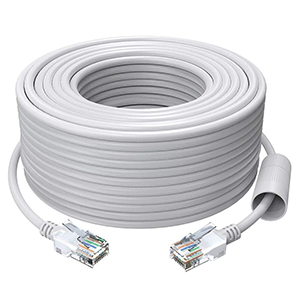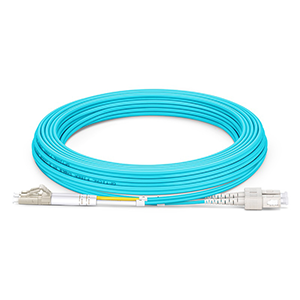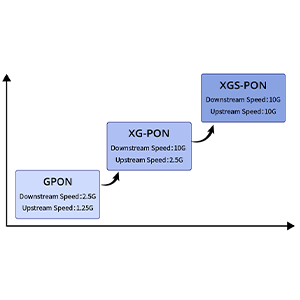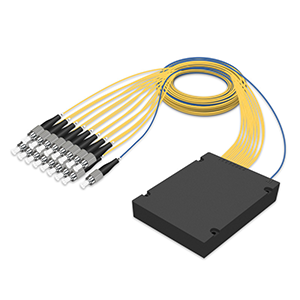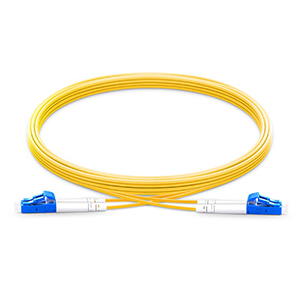Hello everyone! Today I am pleased to introduce to you in detail a high-performance product that is widely favored in the field of network cabling – CAT5e network cable. As a high-quality choice for high-speed network transmission, CAT5e network cable not only supports a variety of application scenarios, but is also favored for its lower cost and simple installation and maintenance advantages. In this article, I will analyze the technical specifications, transmission speed performance and wide range of application fields of CAT5e network cable for you. I believe this will help you choose the network cable product that best suits your needs.
Technical specifications of CAT5e network cable
CAT5e (Category 5e) is a network cable standard that is an improvement on the original CAT5 standard and is mainly used for local area networks (LAN) and other data transmission applications. The following is the definition of CAT5e network cable, main technical parameters, transmission rate and bandwidth support, and performance comparison with other types of network cables:
CAT5e network cable definition and technical parameters
- CAT5e network cable is a twisted pair cable that is improved on the original CAT5 standard to provide better anti-interference capability and performance.
- Main technical parameters include: wire type, wire specifications, twisted pair structure, insulation material, outer sheath material, etc.
CAT5e network cable transmission rate and bandwidth
- CAT5e network cable supports transmission rates up to 1 gigabit per second (Gbps), that is, Gigabit Ethernet, and can also be backward compatible to support transmission rates of 10/100Mbps.
- Its bandwidth is usually 100MHz and can support a variety of applications, including data, voice and video transmission.
Comparison of performance differences of CAT5e network cables
- Compared with CAT5 network cable, CAT5e network cable provides better anti-interference ability and higher transmission rate, making it more suitable for today’s high-speed data transmission needs.
- Compared with CAT6 and CAT6a network cables, CAT5e network cables have lower transmission rates and bandwidths, and slightly worse anti-interference capabilities. Therefore, in environments with long-distance high-speed transmission or high requirements for anti-interference, CAT6 and CAT6a network cables may be more efficient. Be applicable.
- Compared with CAT7 and CAT8 network cables, the transmission rate and bandwidth of CAT5e network cables are far behind, and the anti-interference ability is relatively weak. Therefore, in environments that require higher speeds and higher performance, CAT7 and CAT8 network cables are more suitable. Competitive Advantage.
To sum up, CAT5e network cable is a twisted pair cable standard widely used in local area networks and data transmission. It has a transmission rate of 1 gigabit per second and a bandwidth of 100MHz, providing good anti-interference ability and performance. Compared with other types of network cables, CAT5e has certain differences in transmission rate, bandwidth and anti-interference ability. Therefore, when selecting a network cable, it is necessary to evaluate and select based on specific network requirements and environmental conditions.
Transmission speed of CAT5e network cable
CAT5e (Category 5e) network cable is a universal twisted pair cable that can provide different transmission speeds in different application scenarios. The following will analyze in detail the actual transmission speed of CAT5e network cable in different application scenarios, and explain that it can meet most modern network needs:
Gigabit Ethernet application
- CAT5e network cable can fully support 1000Mbps (1Gbps) Gigabit Ethernet transmission rate
- In practical applications, CAT5e network cables can easily and stably provide a transmission speed of 1Gbps, which is enough to meet the high bandwidth needs of most enterprise LANs, campus networks and home networks
- 1Gbps transmission speed can smoothly support bandwidth-intensive applications such as high-definition video streaming and large file transfer
10GbE (10 Gigabit Ethernet) application
- Theoretically, CAT5e network cable can also support 10GbE transmission rate up to 10Gbps
- However, due to the high performance requirements of 10GbE for cables, CAT5e network cables may not be able to achieve full-speed transmission of 10Gbps in actual 10GbE applications
- Usually in 10GbE applications, the actual transmission speed of CAT5e network cable is between 1-5Gbps, which can still support mid-to-high-end data center and enterprise backbone network applications
- For some application scenarios that have higher requirements for ultra-high-speed transmission, it is recommended to use CAT6A or higher specification network cables
PoE (Power over Ethernet) application
- CAT5e network cable fully supports IEEE 802.3af and IEEE 802.3at standard PoE power supply
- Can provide up to 30W power supply to connected devices, which can meet the power supply needs of most IP cameras, wireless APs, VoIP phones and other equipment
- In PoE applications, the transmission speed of CAT5e network cable will not be affected by the power supply and can still reach high-speed transmission of 1Gbps
- This characteristic of taking into account both data transmission and power supply makes CAT5e network cable widely used in scenarios where PoE equipment needs to be deployed
In general, CAT5e network cable can meet the transmission needs of most enterprise and home networks. It is a universal network cable choice with excellent performance and high cost performance. As the bandwidth requirements of future network applications continue to increase, higher specification network cables such as CAT6A may become the new first choice.
Advantages and application scenarios of CAT5e network cable
CAT5e network cable has some advantages over other network cable types, including lower cost, wide compatibility, and easy installation and maintenance. The following is an analysis of the advantages of CAT5e network cables and typical applications in office networks, home networks and other fields:
What are the advantages of CAT5e network cable
- Cost advantage: Compared with higher specification network cables such as CAT6/CAT6A, CAT5e network cables have lower raw material and manufacturing costs and are more affordable. This makes it more advantageous in cost-sensitive application scenarios such as small and medium-sized enterprises and households.
- Wide compatibility: CAT5e network cable is compatible with mainstream network standards and technologies such as 1000Mbps Ethernet and PoE power supply, and has a wide range of applications. There is no need to worry about protocol and interface mismatches with existing network equipment.
- Easy to install and maintain: CAT5e network cable has a smaller diameter and is more flexible. It can better pass through narrow spaces during wiring, making it easier to install and deploy. At the same time, later maintenance is also more convenient and flexible.
- Stable and reliable: CAT5e network cable adopts professional shielding and twisting technology, has excellent anti-interference ability, and can maintain stable transmission quality in harsh electromagnetic environments.
- Comprehensive functions: In addition to providing high-speed data transmission, CAT5e network cable also supports PoE power supply function and is multi-purpose, greatly simplifying the deployment of network infrastructure.
Application of CAT5e network cable in office network
- Widely used in LAN construction in small and medium-sized enterprises, government agencies and other office spaces
- Can easily meet the high bandwidth requirements of Gigabit Ethernet for office equipment such as desktops, laptops, printers, IP phones, etc.
- Supports PoE power supply function, which facilitates the deployment of wireless AP, IP surveillance cameras and other equipment and reduces power wiring
- Due to the high flexibility of cables, it is easy to adjust the layout and rewiring of the office environment
- Strong compatibility, can be seamlessly connected with various network devices, reducing IT maintenance costs
Application of CAT5e network cable in home network
- Widely used in various network application scenarios such as home Internet access, IPTV on demand, and home monitoring
- The 1Gbps transmission speed can smoothly support 4K/8K video on demand, online games and other home entertainment applications with high bandwidth requirements
- Relatively low cost, easy to DIY installation, suitable for home users to deploy their own networks
- Strong compatibility, can be seamlessly connected with various home network devices such as routers, set-top boxes, smart homes, etc.
- The cable has good flexibility and is convenient for wiring modification and optimization in the home environment
Therefore, CAT5e network cable is widely used in office networks and home networks due to its cost advantages, wide compatibility, easy installation and maintenance, etc. It is a cost-effective universal network cable product. As future network applications continue to demand higher bandwidth, new network cables such as CAT6A may become mainstream, but CAT5e network cables will still play an important role in the long term.
How to select and install CAT5e network cable
There are some key factors to consider when selecting and installing CAT5e network cables, and correct installation and wiring methods are also very important. The following are considerations for selecting and installing CAT5e network cables:
Key considerations when choosing CAT5e network cable
- Cable specifications: Make sure to choose a network cable that meets the CAT5e standard. The wire diameter is usually 24AWG and can carry a transmission rate of 1Gbps.
- Shielding type: Unshielded (UTP) network cable is relatively low-priced and suitable for environments with weak electromagnetic interference; double-shielded (ScTP/FTP) network cable can better resist interference and is suitable for complex electromagnetic environments such as factories and hospitals. scene.
- Outer skin material: PVC outer skin has better durability, but releases more harmful gases; LSZH (Low Smoke Zero Halogen) low-smoke halogen-free outer skin is more environmentally friendly and energy-saving, with less smoke and toxic gases in case of fire, and is more Suitable for some special occasions such as data centers.
- Conductor material: Pure copper conductors have better electrical conductivity and transmission quality, and have better performance than copper-clad steel cables. However, the cost of pure copper cables is also higher.
- Application scenario: According to the specific requirements of the network environment, such as transmission distance, bandwidth requirements, etc., select the CAT5e network cable model of the corresponding specifications. Generally, unshielded CAT5e network cables are commonly used in home and small and medium-sized enterprise LANs.
Correct installation method of CAT5e network cable
- Follow the TIA/EIA-568-C standard T568A or T568B wiring sequence to ensure the correct matching of wire pairs. Wrong wiring sequence can cause network connection failure.
- Be careful to avoid excessive bending of network cables and maintain a minimum bending radius (4 times the cable diameter). Excessive bending will damage the internal structure of the wire and cause a decrease in transmission quality.
- Reserve an appropriate length of network cable and avoid wiring that is too tight or too loose. If it is too tight, the cable may be damaged, and if it is too loose, it may easily accumulate dust and be damaged.
- Use professional crimping tools to crimp the RJ-45 connector in a standardized manner to ensure reliable connection. Household tools may not achieve standard crimp results.
- Properly plan the direction of network cables and try to avoid parallel wiring with power lines and electromagnetic equipment. Parallel wiring may cause interference.
FAQs and troubleshooting suggestions for CAT5e network cables
- The transmission quality of the network cable has deteriorated: Check whether it is excessively bent, flattened, or mechanically damaged. Damaged network cables should be replaced if necessary.
- The network speed is slower than expected: Confirm whether the network cable model and length meet the requirements, and check whether there are loose or failed connectors. Other equipment such as network cards and switches also need to be checked.
- Unable to establish connection: Check whether the RJ-45 connector is fully plugged in and whether the wire pairs are correctly matched. Try crimping the connector again.
- Frequent disconnections: Check whether there are external sources of electromagnetic interference and consider using double-shielded network cables. Also check to see if there are any problems with the network equipment itself.
- Network cable aging and failure: Regularly check the status of the network cable and replace it in time if it is damaged to ensure the continued stable operation of the network.
So choosing the appropriate CAT5e network cable model and following the correct installation method are the keys to ensuring network quality. At the same time, targeted troubleshooting and solutions are also needed for some common problems. Only by fully controlling these links can CAT5e network cables truly exert their advantages and provide reliable and efficient transmission services for network applications.
Summary
CAT5e network cable is undoubtedly a star product in the field of network cabling. Its excellent transmission performance can not only meet mainstream applications such as Gigabit Ethernet, 10GbE and PoE, but also has a relatively low cost and is relatively simple to install and maintain. Whether in office network, home network or other scenarios, CAT5e network cable is your ideal choice.
We provide CAT5e network cable products that meet various specifications and needs, and do our best to provide you with excellent customer service. If you have any questions about choosing or using CAT5e network cable, please feel free to contact us. Let us work together to build an efficient and stable network infrastructure to help you on your digital transformation journey!
CAT5e network cable FAQ
CAT5e cables support a maximum transmission speed of 1 gigabit per second (Gbps), also known as gigabit Ethernet.
CAT5e cables support a maximum transmission speed of 1 Gbps, while CAT6 cables support up to 10 gigabits per second (Gbps) for 10-gigabit Ethernet.
CAT5e cables typically support transmission distances of around 100 meters. Beyond this distance, transmission speed may degrade or the connection may become unstable.
Yes, CAT5e cables can support applications with high data transfer requirements such as video streaming and online gaming.
Yes, CAT5e cables can support PoE technology, allowing power and data to be transmitted over the same cable.
In home networks, CAT5e cables are commonly used to connect devices such as smart TVs, gaming consoles, network cameras, and wireless routers, supporting various network applications.
CAT5e cables are suitable for most home networks, small office/home office (SOHO) networks, and small to medium-sized enterprise networks.
Ensure CAT5e cables are properly connected and secured, and avoid placing them near sources of interference such as power lines and electrical appliances to maintain transmission quality.
es, CAT5e cables can connect multiple devices, but proper planning and management are required based on network loads and bandwidth requirements.
Yes, CAT5e cables are the standard for 1 gigabit Ethernet and can support transmission speeds of up to 1 Gbps.

